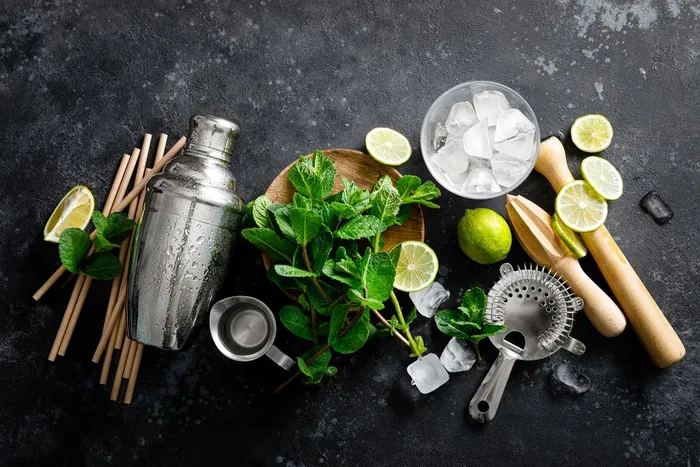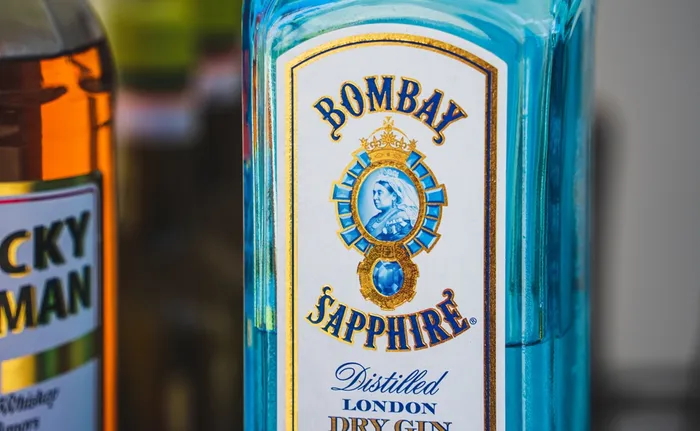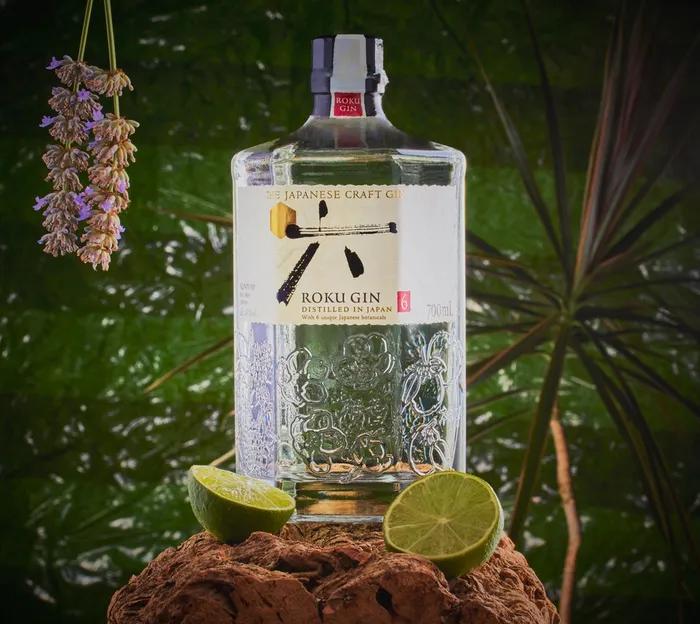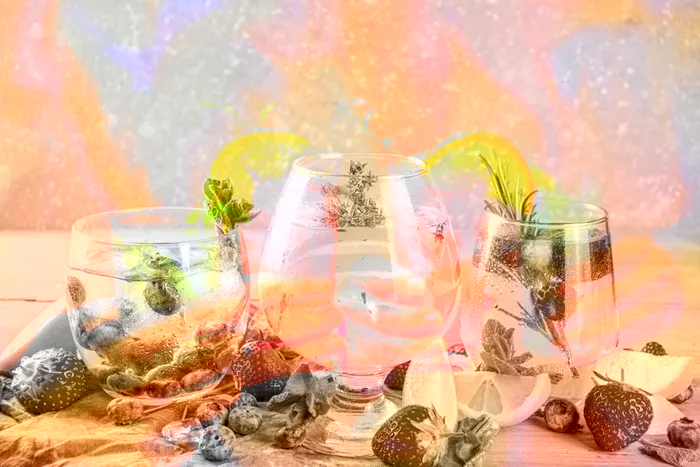There are no results that match your search.
Gin • 7 min • 06.09.2023
Exploring Types of Gin: A World of Unique Flavours

Gin, a spirit deeply rooted in European history, traces its origins to the Dutch beverage 'Genever'. Introduced to the British during the 17th century, it underwent a transformation, evolving into the gin we recognise today. Over the years, the gin category has expanded, with distilleries experimenting beyond traditional recipes. From the classic London Dry Gin to the contemporary flavoured gins, this spirit offers a diverse range of tastes, each with its unique botanical blend and production method.
As we delve deeper, we'll explore the nuances that set each type apart and the rich palate of flavours they bring to the table. Dive into the world of gin with insights from our knowledgeable Maria Massoura DipWSET. Drawing from her extensive background in wine, spirits, and food, Massoura is here to share her insights with you.
Difference Between Gin and Dry Gin
Understanding gin requires distinguishing it from dry gin. Here's a quick guide on how you can do it:
- The Essence of Dry Gin
Dry gin doesn't contain any artificial flavouring. Instead, its distinct taste comes purely from the botanicals used during distillation. Dry gin can have a natural sweetness from certain botanicals used in the gin-making process, such as liquorice.
- Gin
This type of gin may have artificial sweeteners added after distillation that range from sugar cane to beetroot, giving the gin a sweeter profile. While a sweeter gin can be delightful on its own, balancing it with other ingredients is a really important step for reaching the fuller taste.
London Dry Gin: Reasons Behind Its Popularity
Originating from the heart of the UK, this gin type has set a benchmark for quality and taste. Its defining characteristics include a pronounced juniper berry flavour, complemented by delightful citrus fruit. This combination gives it a unique dry sensation that has become synonymous with the classic gin.
What sets London Dry Gin apart and makes it a favourite among many is its versatility. It's the go-to choice for many cocktails. Whether you're stirring up a classic Negroni, a refreshing Basil Smash, or the timeless gin and tonic, London Dry Gin provides that crisp citrus character that elevates the drink.
Old Tom Gin: How It Compares To London Dry Gin
Old Tom Gin serves as a historical bridge in the gin world. It connects the juniper-based Dutch Genever, the original gin, with the modern, crisp London Dry Gin. Think of Old Tom Gin as a middle ground: it's lighter and less sweet than Genever but offers a richer profile than London Dry.
Additionally, when you take a sip, you'll notice that Old Tom provides a fuller mouthfeel compared to the sharper and crisper sensation of London Dry. So, if you're looking for a gin experience that combines the best of both worlds, Old Tom Gin might just be your perfect pour.
Plymouth Gin: Flavour Profile and Top Cocktail Recommendation
Plymouth Gin is a fascinating spirit that's drier than London Dry but boasts a more citrus-forward profile. "This gin is sharper, spicier, and earthier, thanks to its unique blend of seven botanicals, including coriander seeds, cardamom, angelica root, and orange peels," says Massoura. Its slightly oily texture and robust flavour make it a favourite for crafting the perfect dry martini.
One standout cocktail that showcases Plymouth Gin's versatility is the "Pink Gin." This cocktail is a delightful blend of Plymouth Gin and a few dashes of Angostura bitters. This enhances cocktail flavours, stirred and strained to perfection.
Pink Gin: For Gin With A Twist
Pink gin, contrary to what many might think, isn't a modern-day invention. The origins of pink gin trace back to 19th-century Britain. The classic pink gin was much like the "pink gin" cocktail, crafted by adding a few drops of Angostura bitters to the gin, resulting in its signature pink shade.
Today, bars and liquor stores are stocked with various pink gins, which can be divided into two main categories:
- Natural Pink Gins
These gins derive their pink hue and flavour from natural ingredients, such as fruits like pomegranate and red berries, grape skins, and even rose petals.
- Artificial Pink Gins
Some pink gins achieve their vibrant colour and sweetness from artificial additives, colouring, and sweeteners.
A World of Flavoured Gins
The gin scene is bursting with flavour-infused variants. And we're not talking about artificially flavoured ones. Many distilleries, after perfecting their standard gin, venture into creating variations that offer a unique taste experience.
For instance, Gin Mare from Spain boasts Mediterranean flavours with ingredients like rosemary, basil, thyme, and even olives. Then there's the Four Pillars Bloody Shiraz from Australia, which intriguingly uses Shiraz grapes, and the Smith Lemon Drizzle Gin is reminiscent of a British summer in a bottle.
Garnishing Your Gin: An Art in Itself
Garnishing isn't just about making your drink look pretty; it's about enhancing and complementing the flavours of the gin. Here's a guide to garnishing based on the type of gin:
- London Dry Gin
Given its citrus-forward profile, garnishes like lemon, lime, or grapefruit peels work wonders. For a twist, try adding cardamom or even a sprig of rosemary.
- Flavoured Gins
Depending on the primary flavour, you can add complementary garnishes. For a berry-flavoured gin, frozen raspberries or berries can be a delightful addition. For floral gins, delicate garnishes like rose petals or elderflower can be used.
- Sloe Gin
Given its fruity profile, a slice of fresh citrus or even a cinnamon stick can add depth to the drink.
- Aged Gins
Given their complex profile, it's best to keep it simple. A large ice cube and perhaps a twist of orange peel would suffice.
Reflecting on Gin's Flavour Evolution
Tracing its roots back to the Dutch 'Genever,' gin has undergone a remarkable transformation over the years. Its transition from a medicinal drink in Europe to a beloved spirit in Britain showcases its adaptability and timeless charm. As we look back, we can appreciate the rich tapestry of its history and the ever-evolving landscape that keeps gin enthusiasts eagerly anticipating the next pour. With a spectrum ranging from the classic London Dry Gin to innovative flavoured gins, the world of gin that Paneco offers, is a real diverse palate for gin enthusiasts.


















